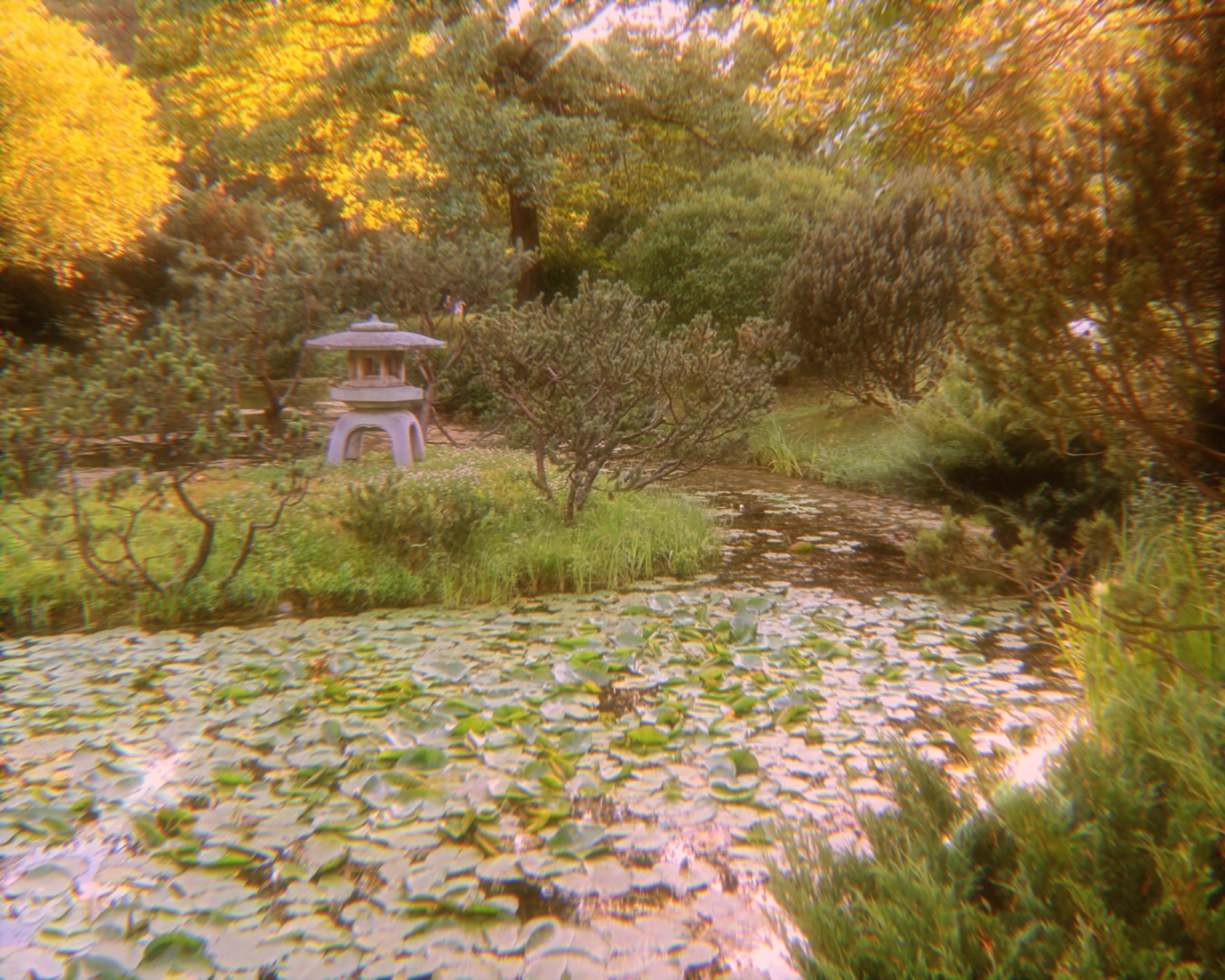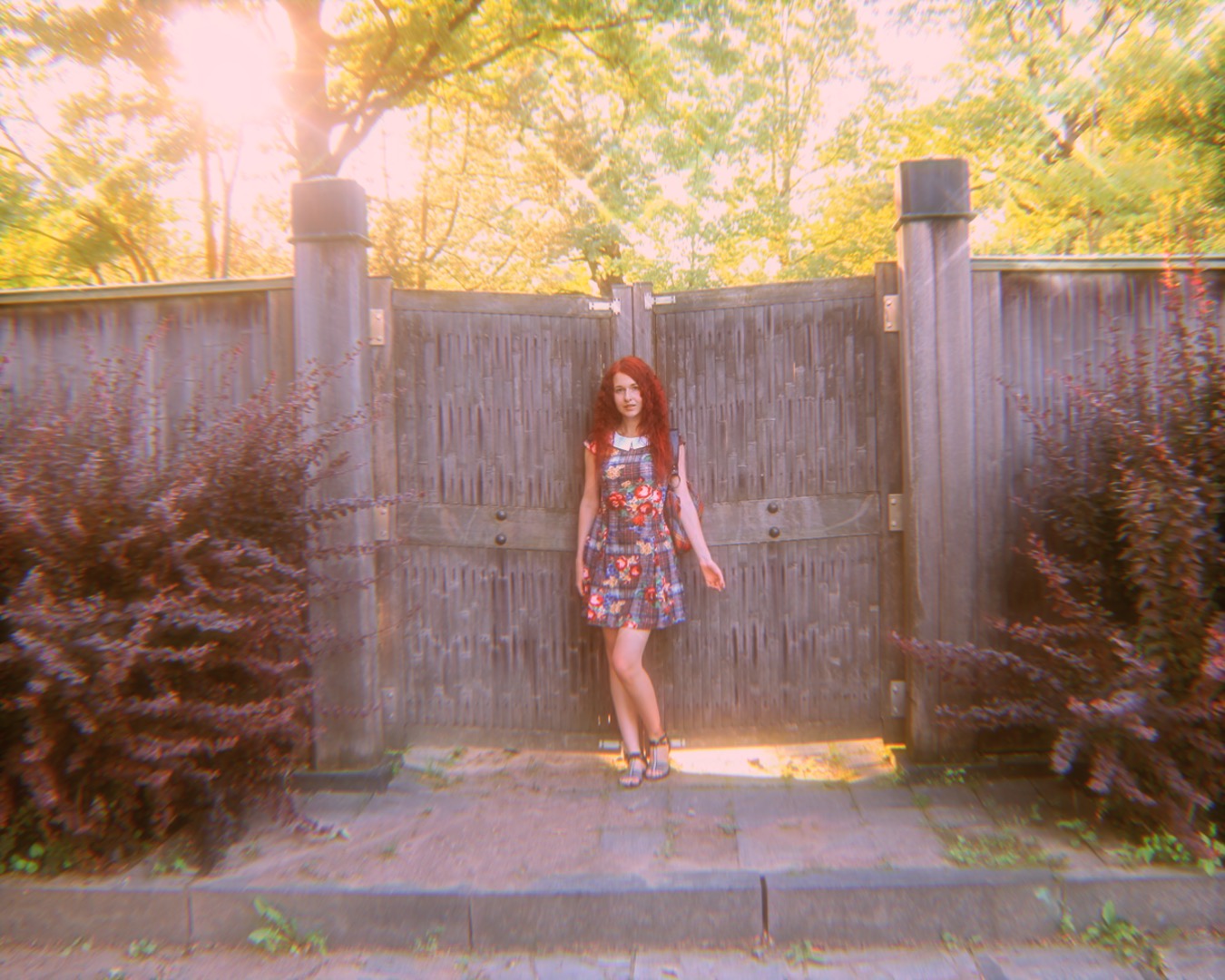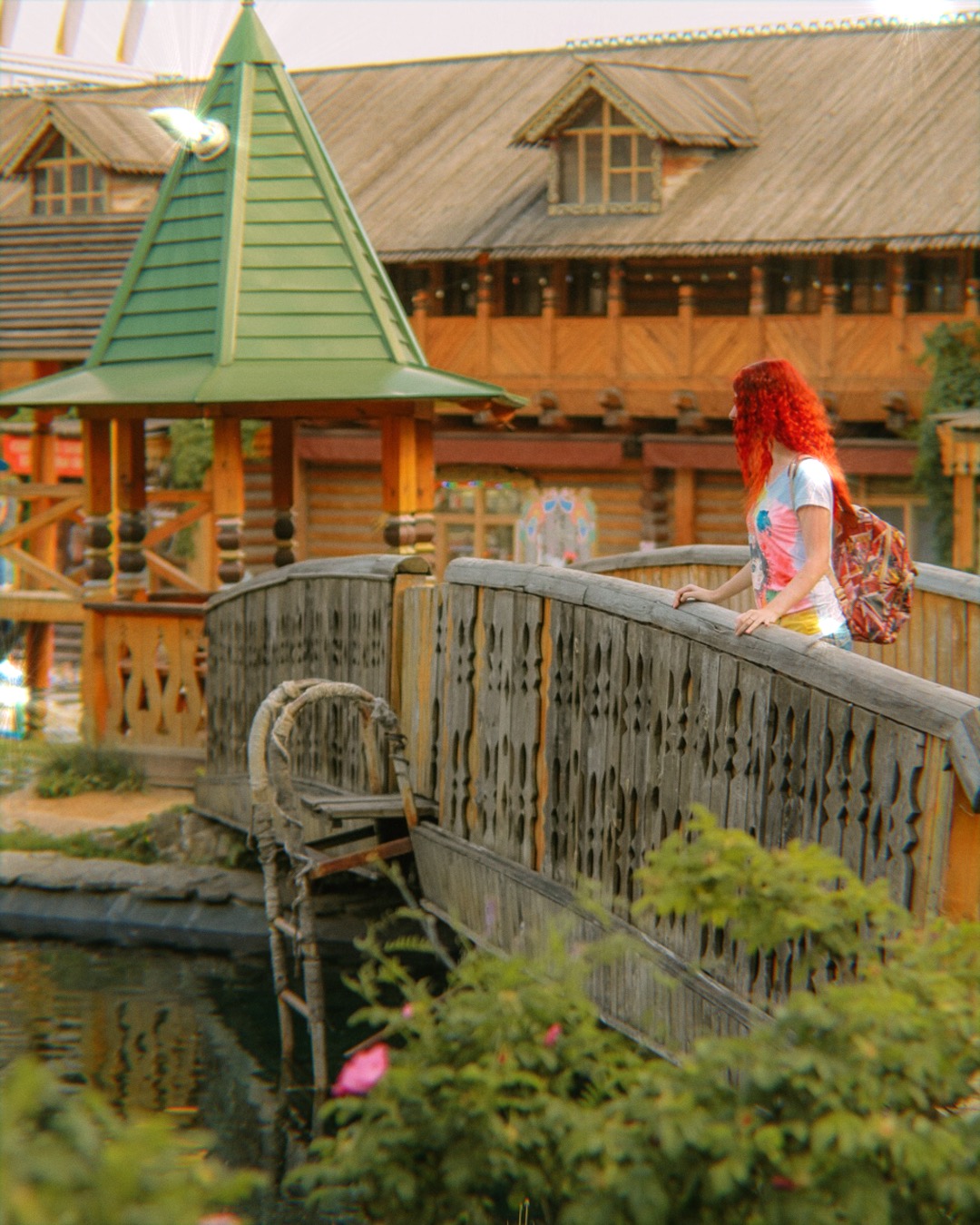Moscow! A dirty, crowded, noisy metropolis? Not for me. I see it differently—green, calm, and romantic, with an incredible number of parks, ponds, and water bodies. One of my favorites is the Japanese Garden in Moscow, the one near the Botanical Garden. I come here every year, open a book, and read to the rustle of grass and the murmur of streams.

Delving into philosophy in the Japanese Garden.
Finding the right answers or simply resting—the Japanese love to do this in the garden. They believe that nature is an ideal to strive for, a philosophy of life that we should understand.
In Japan, there’s a centuries-old tradition called “Hanami”—having picnics under the blossoming cherry trees. This place is perfect for enjoying another cherry in your mouth and washing it down with sparkling champagne.
The Japanese Garden in Moscow is a good alternative for those who want to visit Japan but can’t. It features an 18th-century stone pagoda, a stream with cascading waterfalls, several ponds with small islands, wooden bridges, stone lanterns, and, of course, sakura brought from Hokkaido Island.
Hanami: When does sakura bloom in Moscow?
Hanami is the Japanese celebration of the soft pink blossoms. It literally means “flower viewing.” This festival has become official, with people gathering in parks for picnics under blooming sakura trees, gazing at and catching falling petals.

Sakura blooms at the end of April or early May and only lasts a few days (often from May 3 to 7). The Japanese compare this fleeting beauty to the ephemerality and charm of life. But in Japan, there are millions of varieties of sakura: one stops blooming, and another begins, extending the spectacle for a month or even longer. There are even types that bloom in autumn.
In Moscow, this is one of the few places where you can even see sakura. Here, in this tiny period of time, everything is filled with delicate blossoming trees, like clouds. It is incredibly beautiful. I will have another post on this topic, but a little later, I will show you photos and it is truly magical!
You can track the blooming of sakura on the website of the Japanese Embassy in Moscow.
Here, not only do these delicate spring flowers bloom, but also apricots, kerria, irises, astilbe, rhododendrons, and hosta. Many of these plants were also brought from the Land of the Rising Sun.
How did the Japanese Garden in Moscow come about.
The garden was created and gifted to Moscow by Ken Nakajima. The very first structure was bamboo gates. There is a Japanese tradition where a sacred place is chosen first, and only then is the entrance built.
The garden is quite hilly because over 250 tons of cobblestones were brought from Zakarpattia. And a Shinto priest, Kannushi, came to oversee the lighting of the garden.
The stones in the Japanese garden symbolize mountains and masculine strength (Yang), while the bodies of water and streams represent the negative but soft feminine force (Yin). The eternal opposition of Yin and Yang forms the foundation of the world’s existence.
Japanese gardens began appearing over 1,500 years ago, usually built next to temples for prayers and meditation as representations of paradise on earth.

Every detail here has its own meaning.
What you see here is an azumaya, a tea house. In such houses, the Japanese enjoy drinking tea. The tsukubai basin is where water for tea ceremonies is taken.
The round shape of the windows symbolizes the moon, while the circular entrance represents the sun. These houses are modest, often containing nothing more than a bench. This simplicity is intentional, designed to avoid distracting from the contemplation of nature.
All around the park, there are stone lanterns called tōrō 灯籠. These are not just decorative ornaments; each has its own name and purpose, and candles are often placed inside.
One type of stone lantern, the yukimi-tōrō, is designed specifically for snow viewing. They have flat roofs where fluffy white snow accumulates and lingers longer. These lanterns are typically placed on the shore or in water, giving the impression that there’s twice as much snow.
The kasuga-tōrō is the largest lantern, usually placed in the most prominent location, often at the entrance.
If you admire Japanese culture, especially Japanese gardens and although my blog shows a more European culture, I still have one post about finding inspiration in Japanese gardens. Anyway, wherever you are, in Europe or Asia, at home or outdoors, you can always find a corner of silence for yourself.

Other atmospheric spots in Moscow on my blog.
- A day at Neskuchny Garden – Lovely place in Moscow
- Ghost Town Piligrim Porto Movie Town
- The museum of Unique Dolls in Moscow
- Visit to the Church of the Immaculate Conception at Christmas time
How to get to the Japanese Garden in Moscow.
The Japanese Garden in Moscow is located within the larger Main Botanical Garden of the Russian Academy of Sciences, near the Vladykino and Botanichesky Sad metro stations. From either station, it’s a short walk (10-15 minutes) to the garden’s entrance. Once you arrive at the Botanical Garden, you’ll need to head toward the northern section, where the Japanese Garden is situated. There are signs everywhere, so you won’t get lost.
But I highly recommend traveling by car, as it’s the most convenient and direct option. If you don’t have a car, you can rent one at very reasonable prices here. If you’re coming by car, there’s parking available near the garden, but it’s often limited, especially on weekends.
Check Aviasales to find the cheapest flights to Moscow if you’re traveling from another country.

What you need to know.
Opening Hours and Cost: The Japanese Garden is open daily from 10:00 AM to 6:00 PM, with extended hours during the summer months. It’s good to check ahead on official site for any seasonal changes, especially during public holidays when hours might vary. As for the cost, the entrance fee is around 300 RUB for adults and 150 RUB for children.
Best time to visit: The garden is at its most picturesque during spring and early autumn. In spring, the cherry blossoms bloom, casting a delicate pink hue over the serene ponds and pathways. In autumn, the fiery reds and golds of Japanese maples create a stunning backdrop for a quiet stroll. Mid-morning to early afternoon is the best time to visit for optimal light, though if you’re seeking peace, aim for a weekday visit when the crowds are thin.
Where to eat: While there aren’t food options directly within the garden, there are a few charming spots nearby. The café inside the Botanical Garden offers light snacks, but for a more substantial meal, the restaurants near the metro station, such as “Uzbekistan,” offer a nice variety of dishes that cater to different tastes. If you’re in the mood for something light, you could pack a picnic, though eating inside the garden itself is not permitted. However, just outside the Japanese Garden’s gates, you’ll find some lovely spots for a peaceful outdoor lunch.
Tips for photographers: For those with a passion for photography, the Japanese Garden is a dream. The carefully curated landscapes, with their Zen-like harmony, provide endless photo opportunities. Be sure to bring a good camera or even a smartphone with strong portrait and landscape capabilities. Early mornings offer the softest light, ideal for capturing the peaceful ambiance, especially around the bridges and ponds. The Koi fish in the ponds also make for stunning subjects!
Click here for information about organized excursions in Moscow.
The best accommodation options near the Japanese Garden in Moscow.
If you’re planning a visit to the Japanese Garden in Moscow, you’re in for a serene experience that beautifully combines nature and culture. But the magic doesn’t have to stop when the garden closes. Here are some of the best accommodation options nearby, offering restful stays that complement the peaceful charm of the Japanese Garden.
Hotel Savoy Moscow: If you’re looking for a blend of history and luxury, the Hotel Savoy Moscow is ideal. This elegant hotel is located in the heart of the city, offering easy access to both the Japanese Garden and Moscow’s other famous sights. The Savoy’s classical architecture and lavish interiors create a sense of old-world charm, while its rooms offer all the modern conveniences you need. Enjoy a relaxing evening in their renowned restaurant or take a leisurely walk to nearby attractions after immersing yourself in the peaceful ambiance of the Japanese Garden.

Art Hotel Moscow: Art Hotel Moscow offers a different, more artistic experience. Located in the Sokol district, not too far from the Japanese Garden, this boutique hotel has an artistic vibe with curated design pieces throughout. The hotel’s cozy rooms are perfect for a peaceful retreat, with soft lighting and contemporary décor that create a calming atmosphere. The in-house restaurant serves a delicious fusion of Russian and international cuisine, offering a delightful end to your day. It’s a great option if you’re looking for something less traditional but equally charming.
Holiday Inn Moscow Lesnaya: For those who prefer something more familiar and convenient, the Holiday Inn Moscow Lesnaya provides excellent value and comfort. Located a bit farther from the Japanese Garden, it still offers easy access to major transport links, allowing you to explore the city with ease. The hotel’s modern rooms are comfortable and well-equipped, perfect for relaxing after a long day in Moscow’s beautiful gardens and parks.
If you liked this post “A quiet retreat to the Japanese Garden in Moscow” then please follow me on Instagram, so you don’t miss any updates.
I am available for commercial work such as personal photography, brand photography, product photography and more. If you would like to work with me, feel free to email me – hello@foxgleann.com.













